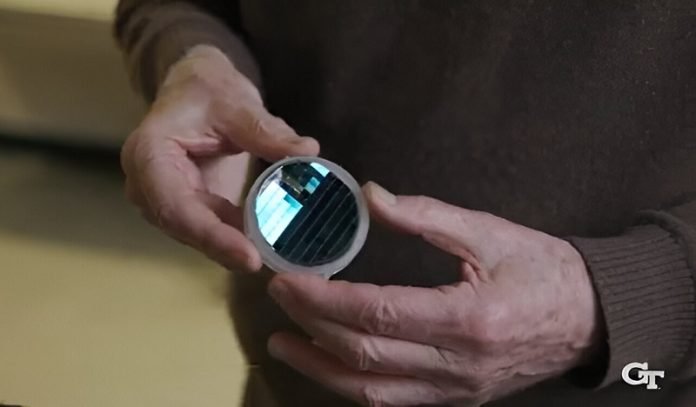
In the world of electronics, a game-changing discovery has been made by researchers at the Georgia Institute of Technology.
They have created something no one else has before: a semiconductor made of graphene. Graphene is just a super thin layer of carbon atoms, but it’s incredibly strong.
Semiconductors are essential in all our electronic gadgets. They are the materials that allow electricity to flow in certain conditions.
This new graphene semiconductor is a big deal because it could change how we make electronics.
Silicon has been the star of electronics for a long time. Almost every electronic device we use is made from it. But as our gadgets get smaller and we want computers to work faster, silicon is struggling to keep up. That’s where graphene comes in.
The team, led by Walter de Heer, a physics professor at Georgia Tech, worked with researchers in Atlanta and Tianjin, China. They managed to make graphene work like silicon but even better.
This is a big win because many people thought graphene couldn’t do this.
Graphene didn’t have something called a “band gap,” which is crucial for semiconductors to work properly. It’s like an on-off switch for conducting electricity. The Georgia Tech team found a way to give graphene this band gap.
De Heer has been interested in carbon materials for electronics for a long time. He started working with graphene in 2001. Graphene is special because it’s very strong, can handle a lot of electricity, and doesn’t get too hot.
The breakthrough came when the team figured out how to grow graphene on something called silicon carbide wafers. This process made the graphene start behaving like a semiconductor.
After years of hard work and collaboration with the Tianjin International Center for Nanoparticles and Nanosystems in China, they perfected their graphene semiconductor.
Graphene is naturally not a semiconductor.
To make it work in electronics, it needs to be tweaked without ruining its unique properties. The team used a method called doping, which adds atoms to the graphene. These atoms donate electrons, making the graphene a good conductor. This method worked without harming the graphene.
Their graphene semiconductor is ten times better at moving electrons than silicon. This means electronics can work faster and more efficiently.
This graphene semiconductor is currently the best two-dimensional semiconductor for nanoelectronics. Its electrical properties are unmatched.
One of the big challenges was getting graphene to have the right band gap. The team’s success in this is a major step towards graphene-based electronics.
This new graphene could change how we do electronics. It has properties needed for quantum computing and could lead to new technologies.
The journey to make graphene electronics was long and tough. De Heer compares it to the early days of flight.
Just like the Wright brothers’ first plane, this graphene breakthrough is just the beginning. It could lead to a whole new generation of electronics, moving beyond the era of silicon.
Source: Georgia Institute of Technology.



